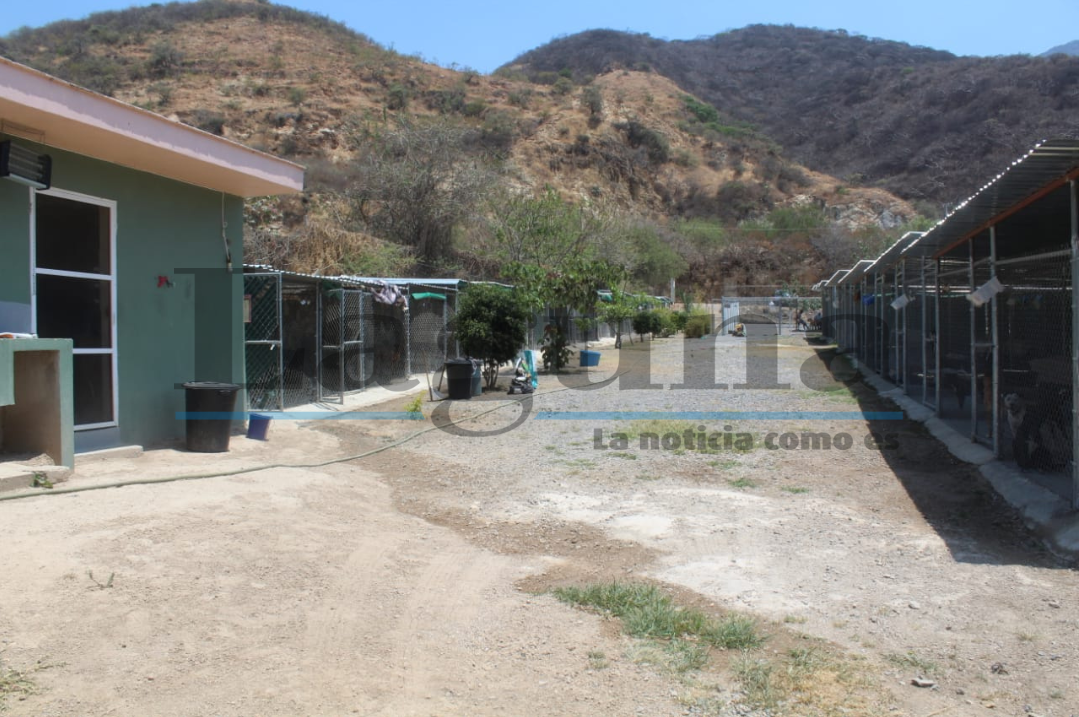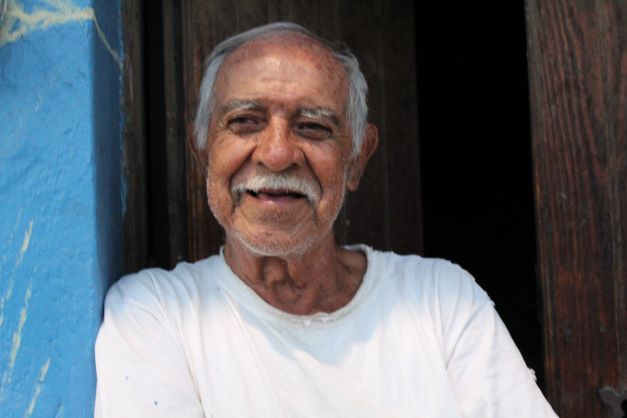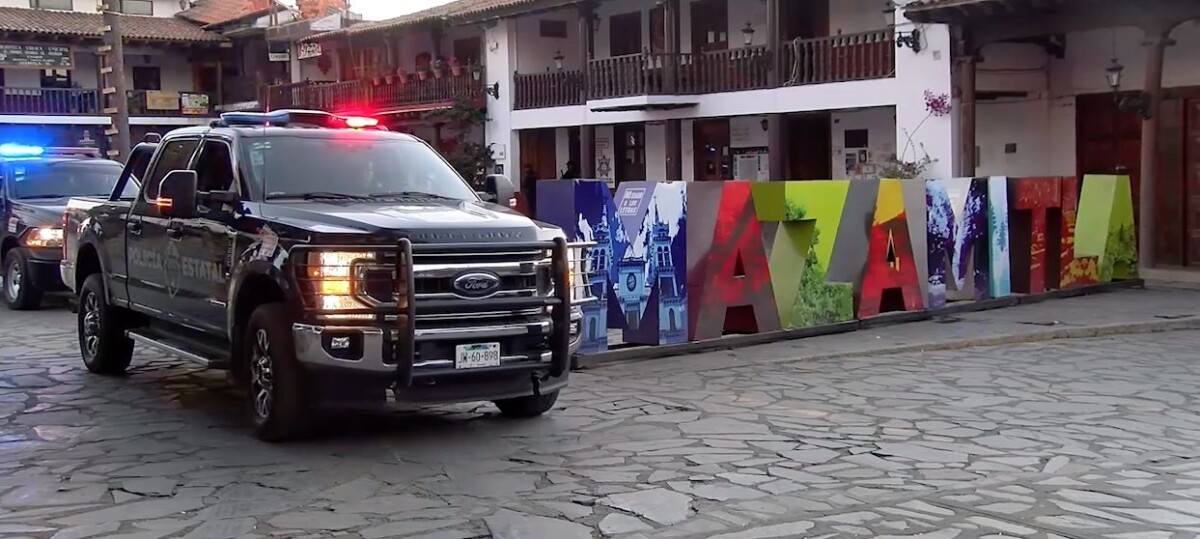Localidades
Drainage project for Riberas del Pilar modified
Alejandro de Jesús Aguirre Curiel, mayor of Chapala. Photo: Archive. Jazmín Stengel.
Jazmín Stengel.- The drainage project for Riberas del Pilar, presented by the Chapala municipal government on April 5 of this year, is undergoing modifications, said Mayor Alejandro de Jesús Aguirre Curiel in an interview.
Although the project was presented to residents as an already analyzed proposal to be carried out in a single six-month stage, the plan has changed. Aguirre Curiel said that the work will be carried out in stages, without specifying how many. The project began on May 4 in the main area and will continue in the commercial area of Riberas del Pilar, but still without a date.
During the April 5 presentation, the President said «first the treatment plant has to be budgeted» for which negotiations are already underway with a private company; a cost of 68 million pesos was announced for the entire project. This included drainage lines, a modular treatment plant, and a connector between the two.
The neighbors were asked to raise 34 million pesos, half of the 68 million pesos that the work will cost. Despite having set a maximum deadline of one and a half months, this was not achieved because many of the residents continued to ignore the invitation.
In order to begin the work, the government must collect 25 percent of the total cost from the neighbors, 17 million pesos. Chapala government representatives said during the presentation that they had the other 34 million pesos, including funds for the biological treatment plant, the land where it will be installed and for the labor to carry out the project.
The contributions of the residents are being collected at SIMAPA’s offices and the amount to be paid by each homeowner is evaluated according to the size of each property. Each homeowner must contribute 70 pesos per square meter of land and 100 pesos for businesses.
The executive plan of the project is available to the general public at the facilities of the Municipal Potable Water and Sewer System (SIMAPA),at Juárez 573, Colonia Centro, in Chapala .
Translated by Patrick O’Heffernan
Neighbors and activists denounce government inaction on invasion of federal land in Riberas del Pilar
Fenced and walled property; this is located inside the lake, in Riberas del Pilar. Photo: Courtesy.
Editor.- Both neighbors of the area, as well as activist groups in favor of the protection of the federal land, have denounced the lack of attention of the authorities to one of the lake invasions in the town of Riberas del Pilar.
This property is located on Paseo del Lago Street, between San Pablo and San Mateo and, according to witnesses, there are plans to build a house. The invaded space measures 75 meters in front, and 20 to 25 meters long facing the lake.
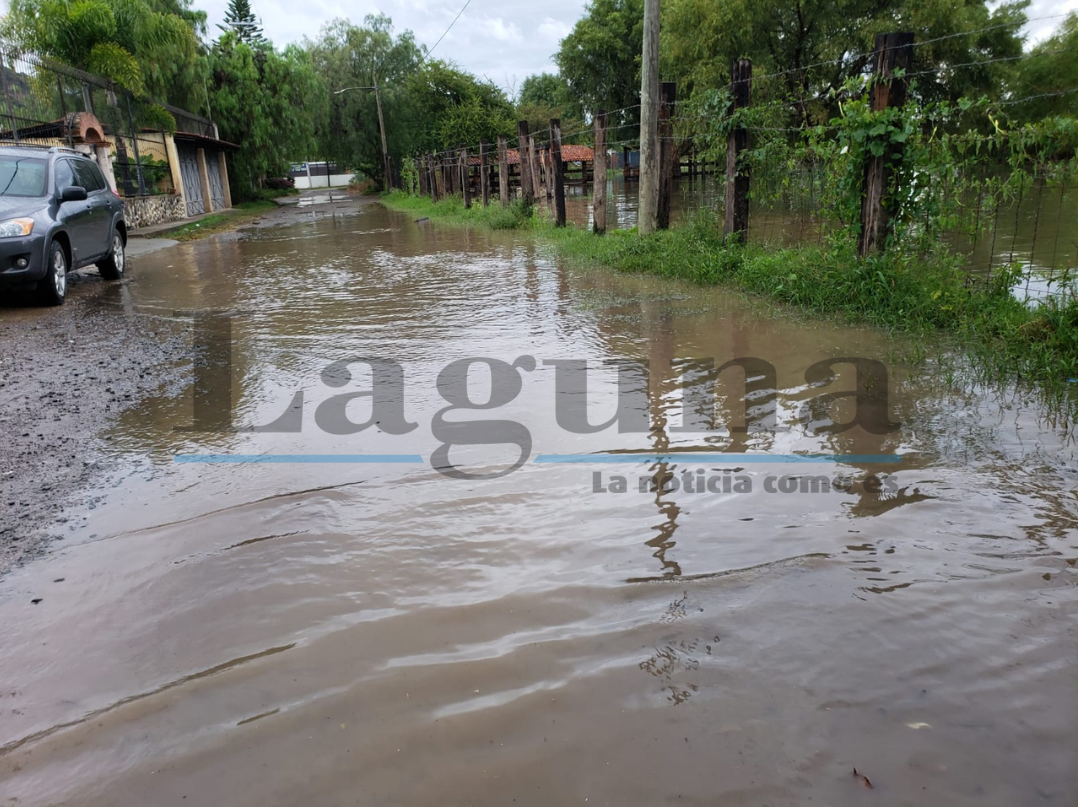
When the level of the lake rises, this land is flooded because it is located inside the lake.
In this particular case, not only is it located on federal land, but the supposed owner is filling it with material now that the level of the lake has dropped, in order to be able to build, which indicates this property is within the territory of Lake Chapala, so that when the level rises, the space will be covered by water.
Some witnesses interviewed, who prefer to remain anonymous, stated that there have already been complaints filed with both the National Water Commission (Conagua) and the Federal Attorney General’s Office for Environmental Protection (PROFEPA), but neither agency has acted.
According to the witnesses, the Chapala government has closed the site on at least two occasions; however, the seals have been removed and services such as potable water and electricity have been provided.
The owner is known among the complainants as «El Torero», and they say that he is a very aggressive person who cares little about invasion issues. There is currently a stable on the land. One of the activists went to talk to the woman who takes care of the stables, who confirmed that he is planning to build a farm there, and so far, he has built the front wall.

Appearance of the fill and what has been built so far. The filled area is located on Paseo del Lago street, between San Pablo and San Mateo.
The Indigenous Community of San Antonio Tlayacapan has become involved in the case, acting to reduce the land that was being appropriated, fencing off at least a third of it and placing signs warning that it belongs to the community.
Currently, the land containing the landfill is without any type of closure. The municipal president, Alejandro Aguirre Curiel, commented that he recently met with the secretary general of the Government of Jalisco, Enrique Ibarra Pedroza, to ask for support to be able to intervene and act in federal zones, since, being a federal matter, «it does not depend on them».
«There have been several meetings with the director of the Conagua, who sent a proposal, but it is very far from what we need; then we seek to rethink it […] they offered approach, advice and willingness to come, but we are looking for authority and power to intervene and act», assured the mayor.
Translated by Patrick O’Heffernan


SOS Dog Rescue volunteer wants to put the 85 remaining dogs up for adoption rather than take them to the new shelter in Chapala.
Dog shelter, located west of Ajijic, at the foot of Cerro Colorado. Photo: Sofía Medeles.
Editor. In order to better understand the controversy surrounding the dog shelter in West Ajijic run by Chapala SOS Dog Shelter, Laguna has been interviewing all the parties involved in the controversy. Last week Laguna interviewed the president and the spokesperson of the homeowners association impacted by the noise from the shelter. This week we have interviewed an influential volunteer at the SOS shelter, and Chapala President Aguirre. Semanario has not confirmed any of the claims made in the interview, except thore of President Aguirre. The volunteer interviewed does not have final decision authority.
Sofia Medeles (Ajijic).- A volunteer of SOS Chapala Dog Rescue, who asked not to be named, said that volunteers want none of the dogs that are currently in the shelter located in Ajijic to go to the new shelter that is being prepared by the current Chapala Government, located in Hacienda de La Labor.
The interviewee told Semanario Laguna that, due to the great investment in health and maintenance the workers and volunteers have made in each dog that is in the shelter, as well as the lack of information about the commitment of care in the new space, they do not want any of the 85 dogs to be transferred. So far, they have not given them a deadline to leave the place.
«None of the dogs are going to go there, because of everything that is invested in each one, besides the fact that there is no certainty that they will continue to be cared for in the same way we care for them., “the interviewee told Laguna, saying that “We want them to go to a better place. We know nothing about the methodology to be used, if the place is suitable, if there are trained people, if the feeding is correct, etc.”
The interviewee also pointed out the lack of commitment on the part of the municipalities to continue with projects such as the shelter, and added that at no time, neither government personnel, nor the Department of Ecology, approached them to notify them, so they found out through social networks. (note: President Aguirre posted a video on the municipal website touring the new shelter and expressing his commitment to excellent care for the dogs, however, o specific information has been provided by the administration).

Currently there are 85 dogs, which cost between 90 to 100 thousand pesos per month. Photo: Sofía Medeles.
According to the volunteer, the monthly investment ranges from 90 to 100 thousand pesos, between medical expenses that include sterilizations, deworming, vaccinations, and in some cases medications and chemotherapy, in addition to food, salary for employees and the sanitization that is carried out. This amount is contributed by volunteers and associations that not only contribute monetarily, but also in kind, and by careful management.
The volunteer also pointed out that the way in which the shelter has been run has always followed international standards for this type of site, such as cage measurements, cage material, roof and floor slope, playground, isolation cages, and daily walks. The interview’ s opinion is that the new shelter will not be able to meet these requirements.
Chapala President Alejandro Aguirre Curiel, told Laguna that although he does not have an exact budget for the new shelter, the investment is relatively low and he hopes that it will open as soon as possible.
He also told Laguna that a group of Expats is interested in supporting the project, but since it is a municipal shelter, the municipality will also be looking for sponsors to keep the space in good condition. He also mentioned that an agreement was signed with those responsible for the SOS shelter, where it was stipulated that they had at least 30 days to vacate, a date that has now expired.
The new municipal shelter is located on a hectare of land in Hacienda de La Labor. The government announced that in a few days the 50 cages will be ready. The cost of renting the space is 15,000 pesos per month, which will be covered by the group of neighbors whose homes have been impacted by the noise from the west Ajijic shelter and whose lawsuit is driving the negotiation process.
The volunteer interviewed added that interested people can help the dogs by donating, adopting or being a bridge house, and even, if there is the possibility, lending a space in contract so that a new shelter can be established in the Ajijic delegation, where most of the sponsors and volunteers are located.(note: a shelter will require permits from the municipality and must be located so that it does not impact nearby homes). For more information, contact the Facebook page SOS Dog Chapala Rescue.
The interviewee also asked pet owners to be aware and responsible; «we will not end up sending dogs and dogs to the United States because people are quick to abandon them. We need to raise people’s awareness, if we provide permanent homes, bridge houses and shelters, we won’t need governments to take care of them», he concluded.
Translated by Patrick O’Heffernan


Remembering Juan “Juanito” Olivares, prolific photographer of Ajijic
Juan Olivares «Juanito» – July 12, 1944 – May 28, 2022. Credit: Sofía Medeles.
Sofía Medeles (Ajijic).- One of Ajijic’s first and most prolific photographers, Juan «Juanito» Olivares, died last Saturday, May 28, 2022. He is survived by his wife Alicia Morales from Ajijic, and three children: Aquiles, Imelda, and Judith. He leaves behind a historical photo narrative covering almost his entire life
He was born on July 12, 1944 in Ajijic. His parents were Antonio Olivares and Romana Sánchez. In an interview from two years ago, Juanito said that he began his artistic career before his 20th birthday, with a plastic arts course. He used photography to improve his drawing technique, but soon photography became his main medium. Of his success, he explained, «when I was doing well, I would print up to 300 photos. When I started, the photos cost 50 centavos, and they went up to 75 centavos, one peso, two, three, and so on until they cost what they cost today.»
With his steadily increasing reputation, he became a fixture at town festivities, and important celebrations throughout the town. During this interview, he nostalgically mentioned how his work as a photographer was devalued over time, due to the advent of cell phones. Even so, he continued painting and making signs and small landscapes for businesses in town. Until the end of his days he remained in love with his little town of Ajijic, «the landscapes have changed a lot because of the development, but it is still beautiful every moment of the day.”
His collection included photos of old hammocks, fishermen, the lakeshore when it still had no pier, no boardwalk, and other landscapes of many iconic Ajijic sites. Some of what he photographed remains today, but much has disappeared; his body of work is art and history. He photographed traditions that are now almost extinct, such as the Day of the Cross, and the Day of the Altars of Sorrows.
Translated by Amy Esperanto
Three men found dead inside an artesian well in the municipality of Tuxcueca on Sunday, May 29
The site was delimited with police tape. Illustration photo.
Staff.- Three bodies were discovered in a well on the federal highway from Tuxcueca to San Luis Soyatlan, half a kilometer from the municipal cemetery, thanks to an anonymous tip received by the Municipal Police.
Personnel from the Public Prosecutor’s Office and the Investigative Police corroborated the fact and Civil Protection went to the place to extract the bodies.
The recovered bodies were armed and had bullet wounds in the skull, and were found in a well that is 10-15 meters deep (about 30-50 feet). They were handed over to the Jalisco Institute of Forensic Sciences, according to the statement issued by the Public Prosecutor’s Office.
Translated by Nita Rudy
Moisés Real Gómez, presents a song and dance dedicated to the Magical Town of Ajijic
Lupita Hernández Romero and Moisés Real, creators of «Son del Telar». Photo: La Tradición de Ajijic.
Sofía Medeles (Ajijic).- With great acceptance and enthusiasm the «Son del Telar» (Sound of the Loom) has premiered, the first one dedicated to the Magical Town of Ajijic.
The musical piece that was created by María Guadalupe «Lupita» Hernández Romero and the musician Moisés Real Gómez, was presented on May 29 with dance and folkloric music in Ajijic’s main square.
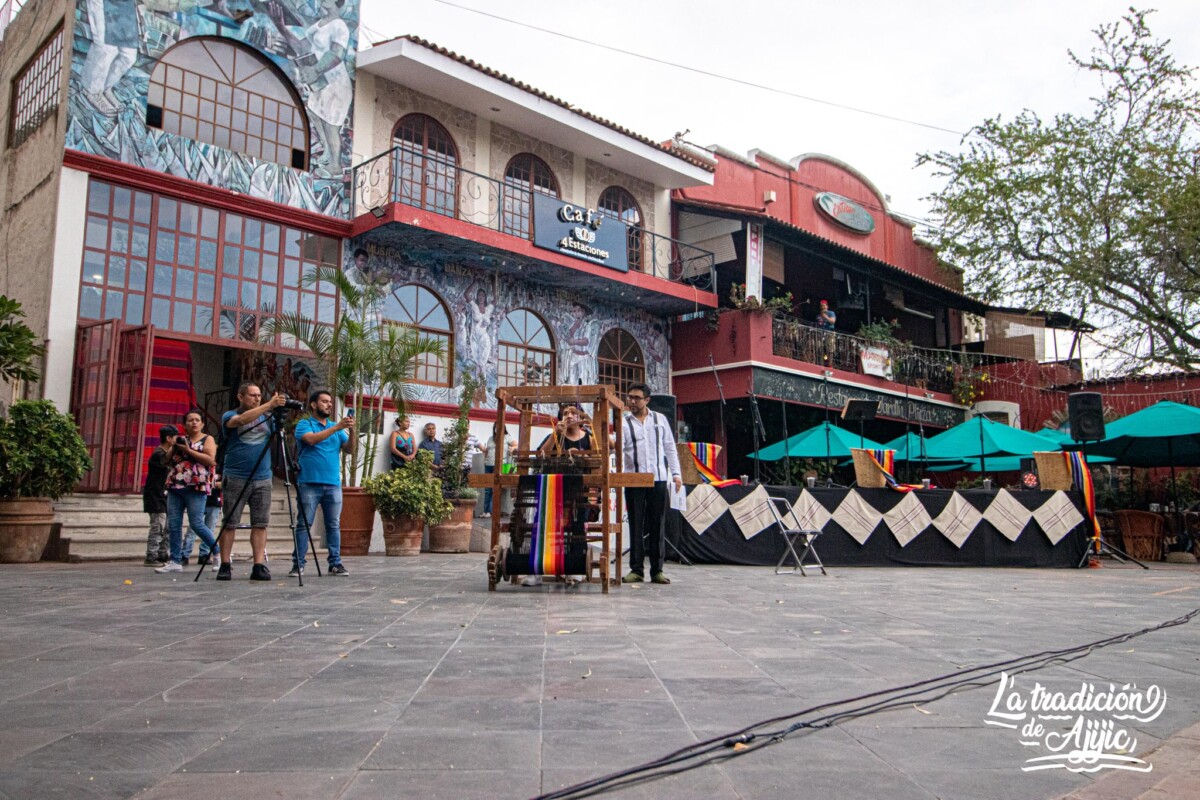
The presentation was framed by a loom. Photo: La Tradición de Ajijic.
The event was attended by more than 150 people. They talked about the sound and the folkloric dance, as well as the making of the costumes that will be used to dance the musical piece that lasts about three and a half minutes.
The song was presented to the rhythm of the loom, accompanied by Mariachi Nuevo Chapala, and the collaboration of Ballet Folklorico Maya and Ballet Folklorico Huitzillin.
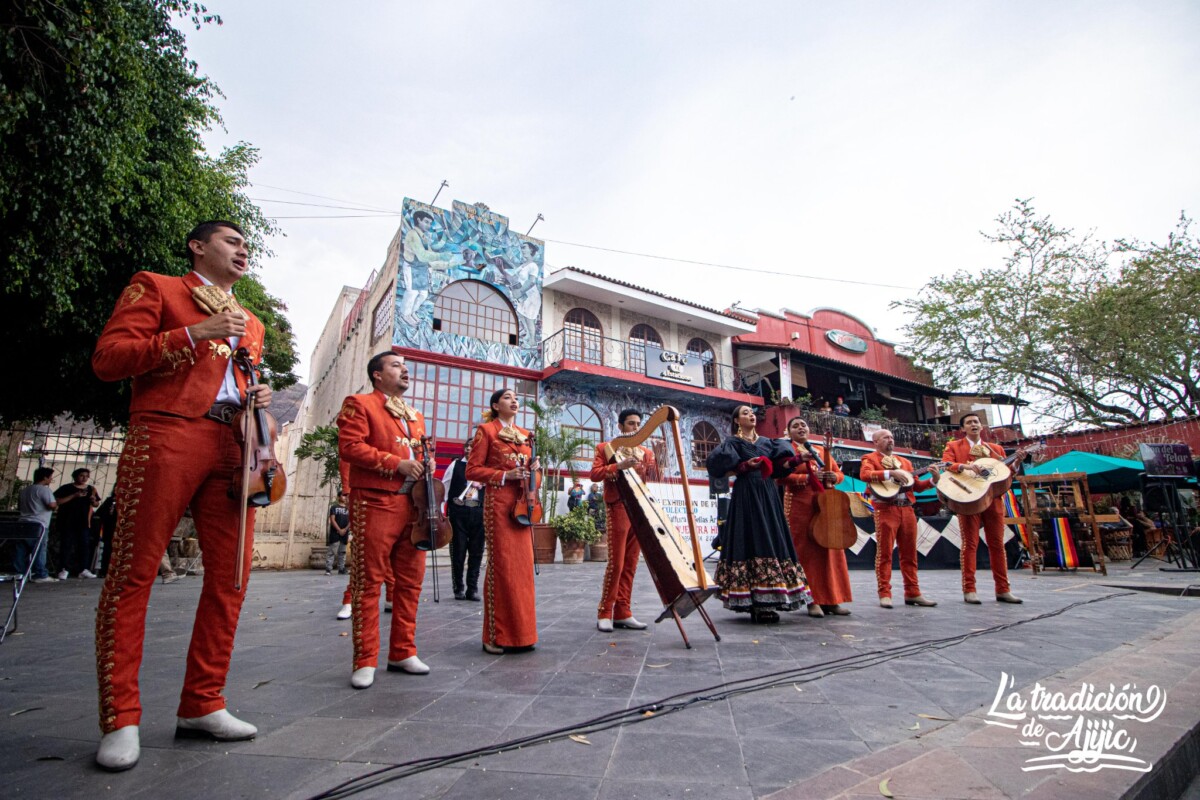
Mariachi Nuevo Chapala was in charge of the interpretation of the musical piece. Photo: La Tradición de Ajijic.

One of the folkloric dances presented during the premiere. Photo: La Tradición de Ajijic.
«From the beginning it was very entertaining, and when it was first presented, it made many of us cry. People were very surprised with the result,» said an attendee of the event.
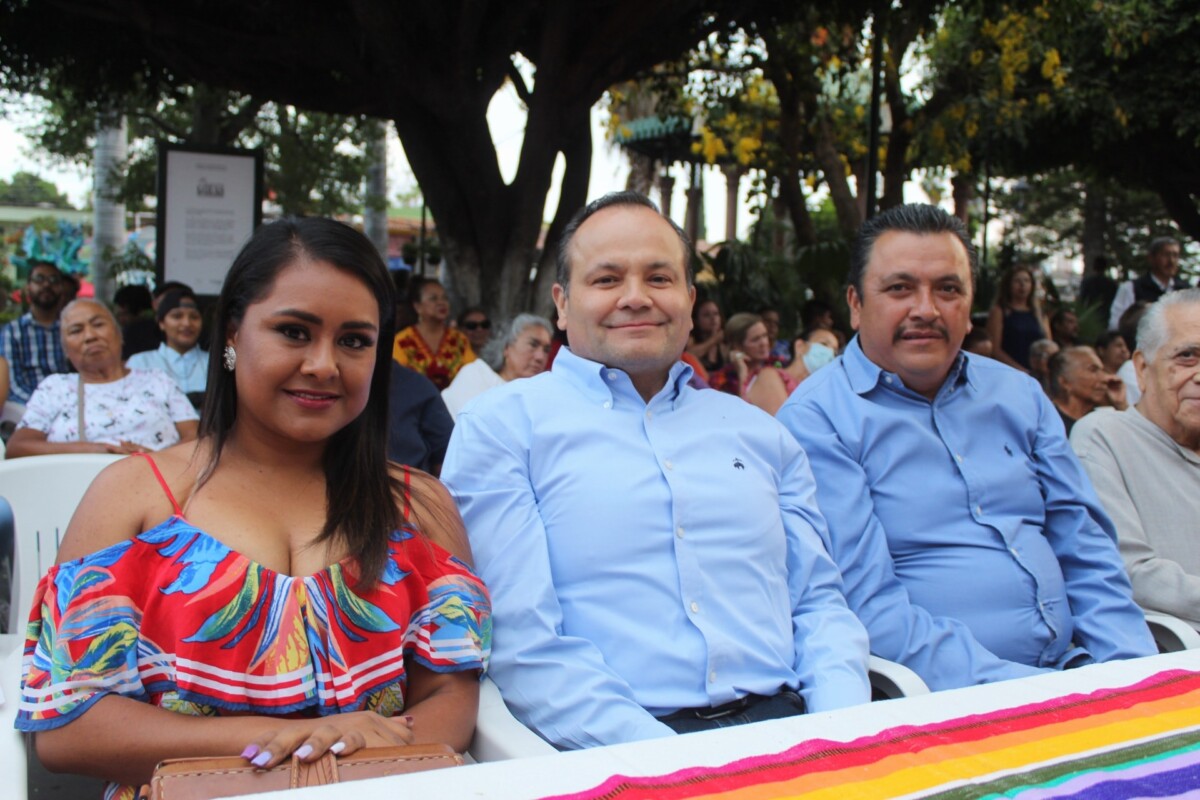
Ajijic council woman Denisse Ibarra; municipal president Alejandro Aguirre; and office manager Maximiano Macias. Photo: La Tradición de Ajijic.
The song «El Son del Telar» can be found on YouTube and Facebook; in the video you can see the popular characters of the sayacas and places like the square and the Magic Town boardwalk. The video is by Mariachi Nuevo Chapala.
«There is no prettier town than my Ajijic, so pretty, full of beautiful girls and lots of sayacas,» can be heard in the song written in honor of the town.
Translated by Sydney Metrick
Man dies after playing soccer
The sidewalk was cordoned off by the authorities while the forensic medical service arrived.
Staff (Chapala).- A man died outside the Juan Rayo soccer field, located on Madero Avenue, Chapala. He was playing a soccer game during the afternoon of May 28 when he began to feel discomfort, so he sought medical attention.
He was escorted to the outskirts of the field, asking for help from the medical authorities, but by the time they arrived it was too late, and he had died on the sidewalk.
Translated by Paul Weeks
Incrementan los homicidios por arma de fuego en la región sureste de Jalisco
Los municipios de Mazamitla y Tizapán son los que más defunciones por arma de fuego han registrado, con siete acumuladas en cada uno. Foto: Almomento.mx.
Redacción.- En poco más de tres meses, la región sureste del estado de Jalisco ha incrementado el número de defunciones 21 veces más que el año pasado en el mismo periodo a consecuencia de la guerra entre los Cárteles Jalisco Nueva Generación (CJNG) y los Pájaros Sierra.
Es decir que entre el primero de marzo y el 12 de junio del 2021 se contaba solo con una defunción por arma de fuego, mientras que para las mismas fechas de este año ya van 21, siendo los municipios más afectados: Tizapán El Alto, Mazamitla, Tuxcueca y Tamazula de Gordiano.
La cifra de defunciones por este motivo, aunque no se esclarece si se investigan por homicidio doloso, sí coincide con el número de autopsias realizadas por el Instituto Jalisciense de Ciencias Forenses (IJCF) desde que ambos cárteles se declararon la guerra.
El caso más reciente corresponde a la emboscada en la que el Comisario de Tizapán EL Alto, José Antonio Langurén perdió la vida y en el mes de mayo, el asesinato de tres personas en Mazamitla, entre ellos el chef, Christian Leif.
Tuxcueca no se queda atrás pues los cadáveres de tres hombres atados de manos, pies y con un tiro en la cabeza fueron encontrados en el interior de un pozo en estado de descomposición.
A la fecha, los municipios de Mazamitla y Tizapán son los que más defunciones por arma de fuego han registrado, con siete acumuladas en cada uno, a consecuencia de esta guerra entre cárteles que se disputa en los límites con Michoacán.
Esto a su vez, ha desatado una serie de operativos en los que participan elemento de la Guardia Nacional como del Ejército, en coordinación con la Policía del Estado, con un saldo de 40 capturas al momento.
Con información de Milenio.
Localizan cuerpo baleado de hombre en Tizapán el Alto
El cuerpo del masculino fue localizado en la colonia La Cañada de Tizapán el Alto. Foto ilustrativa: Cortesía.
Redacción.- Elementos de la Fiscalía del Estado de Jalisco (FE) localizaron el cuerpo de un masculino en Tizapán el Alto, asesinado con arma de fuego.
De acuerdo con el reporte policial, fue ayer lunes a las 12:40 horas cuando los agentes localizaron a un hombre sin vida de 43 años de edad, sobre las calles Camino Real y Camino a La Cañada, en la colonia La Cañada.
El occiso presentó un impacto de bala en la mandíbula del lado izquierdo. La víctima vestía una playera color verde, pantalones de mezclilla color azul y calzado artesanal en color café.
Jocotepec approves payment to CFE, but will ask for reimbursement
Section of the Jocotepec – Chapala bike path, which has had irregular lighting service. Photo: Courtesy.
Héctor Ruiz Mejía (Jocotepec).- The Jocotepec town council approved the payment of a debt to the Federal Electricity Commission (CFE) in the amount of 114,000 pesos. However, they will seek reimbursement, arguing that the balance was due to technical details of the Secretariat of Infrastructure and Public Works of Jalisco (SIOP) in the installation of lights in the bike path.
The payment for the use of electric energy was unanimously approved, and the payment will be made in ten monthly installments of 11,401.20 pesos, however, the town council will seek the legal means to appeal the charge and seek a refund of the payment.
During the fourteenth session of the town council of the Government of Jocotepec, it was informed that the municipality has a debt of 114,012 pesos, generated during the period from January 21 to November 21, 2021.
The municipal trustee, Carlos Alberto Zúñiga Chacón, advised that the debt was generated due to irregularities and inconsistencies during the works of the bicycle lane by the Secretariat of Infrastructure and Public Works of Jalisco.
According to the trustee, the amount was the result of the study of the expenditure of the whole area in kilowatts, which resulted in 2,600 during the period, which represented a fee to the municipality of .05 under the concept of public lighting services.
The irregular monthly expense of approximately ten thousand pesos was due to the fact that the SIOP personnel, during their work on the bicycle path, left the electric service connected to the lights while the necessary technical operations were being installed.
«These were irregular works that now we had to resolve, but we will look for the way to legally request the refund of the undue payment», assured the municipal trustee Zúñiga Chacón during the session.
Translated by Christalle Dalsted
© 2016. Todos los derechos reservados. Semanario de la Ribera de Chapala


